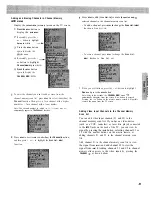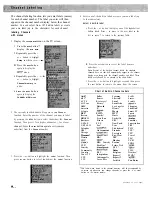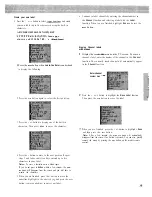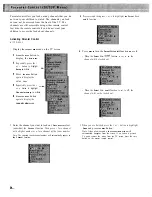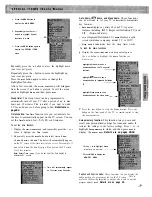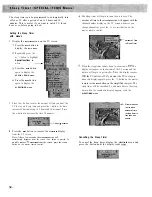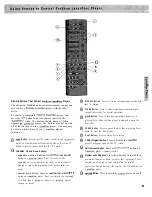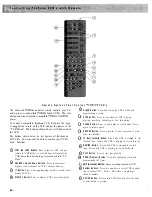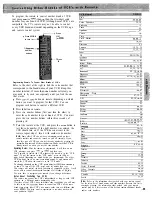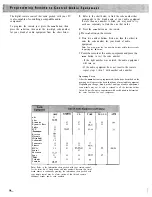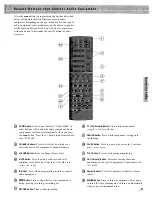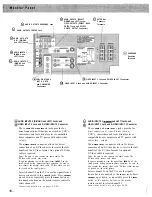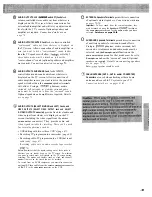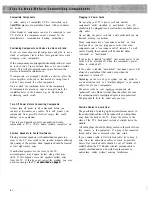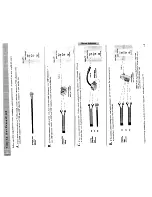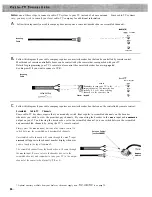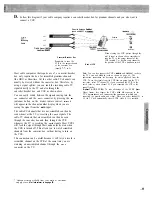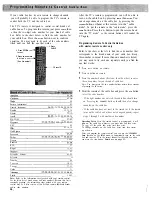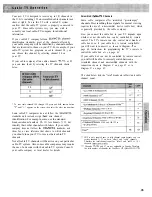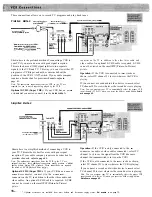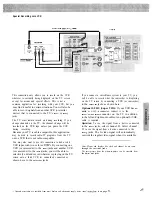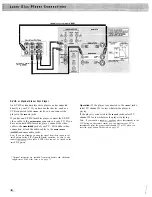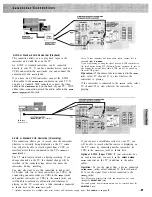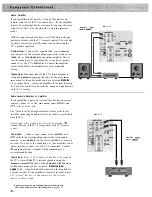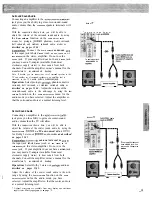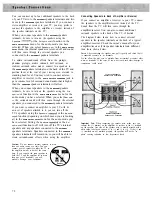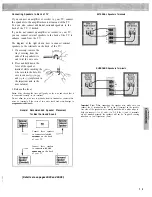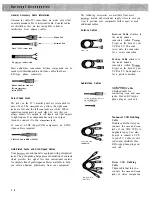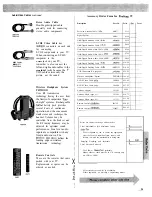
Compatible Components
A wide variety of compatible VCR’s, camcorders, and
players are available. Check with your dealer
for details.
Other brands of components can also be connected to your
TV. Refer to the component owner’s manual for the
manufacturer’s recommended hookup instructions.
Positioning Components on Shelves in a Rack or Stand
If you are connecting several components and plan to use a
stand or component rack, follow these general rules when
arranging your components.
If the components are arranged horizontally, allow at least
an inch or two of space between them so air can circulate
freely. This will also provide some space between the
devices to minimize interference.
If components are arranged vertically on shelves, place the
stereo amplifier at the top so that heated air rising from it
will not pass around the other components.
Do not block the ventilation holes in the components.
If components are placed on rugs or deep-pile mats, the
ventilation holes in the bottoms may be blocked and
overheating could result.
Turn Off Power Before Connecting Components
Always turn off power to all components before you
connect or disconnect any cables. This will protect your
components from possible electrical surges that could
damage your equipment.
This is a good practice for all your audio and video
components
TV’s, VCR’s, audio systems, computers, etc.
Position Speakers to Avoid Interference
Placing external speakers with unshielded magnets too
close to the TV may result in the speaker magnets affecting
the quality of the picture. Such speakers should be located
at least eight inches away.
If unshielded speakers are too close to the TV,
misconvergence may happen (colors along sides may
shift). If this happens move the speakers farther away
from the TV. If this does not correct the problem, you may
need to converge the TV
as described on page 5.
Plugging in Power Cords
Do not plug your TV’s power cord into another
component’s outlet (switched or unswitched). Your TV
should only be plugged into a wall outlet or suitable power
strip outlet.
Do not plug any power cord into a wall outlet until you are
finished making connections.
Many components have “convenience outlets” on their
back panels so you can plug power cords from other
components into a “convenience outlet” instead of a wall
outlet. Usually these outlets will be labeled either
“switched” or “unswitched”.
If the outlet is labeled “switched”, that means power to the
outlet will be switched off when the component’s power
button is switched off.
If the outlet is labeled “unswitched”, that means power will
always be available at that outlet, even when the
component is turned off.
Depending on the size of your system, you may prefer to
use an extension cord or a “multiple adapter” to get enough
outlets for all your components.
The power cords on your
components are
“polarized” (one blade is wider than the other). Be sure
the extension cord or multiple adapter is also polarized.
The plug should fit in the outlet only one way.
Position Cables to Avoid Hum
The possibility of picking up hum (interference noise) in
the audio/video cables will be reduced if you keep them
away from the back of the TV. Route the cables to the
sides of the TV’s back panel instead of straight down the
middle.
All cable plugs should be firmly seated in the jacks where
they connect to the equipment. If a plug is not connected
firmly, audio hum or smeared video may result.
If your antenna cable is flat twin-lead cable, try to keep it
away from the audio/video cables as much as possible.
Excess flat, twin-lead cable should be cut off instead of
coiled behind the TV. Round, coaxial, antenna cable is
usually shielded and can be coiled or placed next to
audio/video cables without causing interference.
a ! -
Summary of Contents for PS52682
Page 65: ...I I I I I I I I I I t 1 I I I I 1 II 1 I 1 ...
Page 81: ......
Page 85: ......
Page 86: ......


